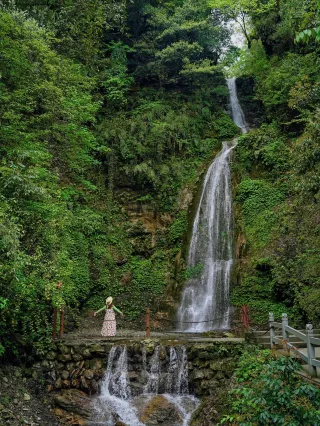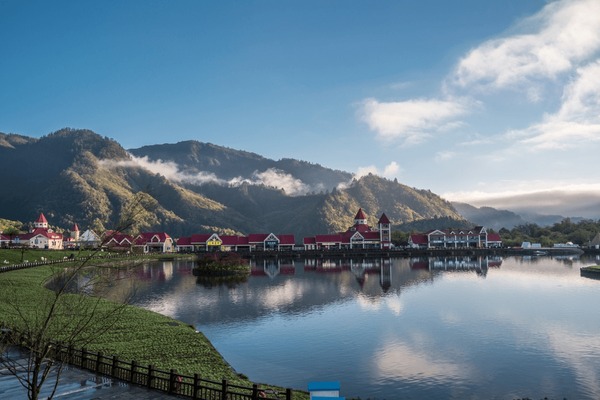Exploring the Mysteries of Sanxingcun: What Ancient Artifacts Reveal About Lost Civilizations

An Essential Guide to Visiting Sanxingcun Site
Nestled in the heart of Guanghan, the Sanxingcun Site (三星村遗址) stands as a testament to an ancient civilization that flourished over 3,000 years ago, captivating visitors with its enigmatic artifacts and rich cultural heritage. What sets this archaeological marvel apart is not just the impressive collection of bronze masks and relics but the profound mystery that envelops the site. The unique craftsmanship and artistic expressions found here suggest a civilization with advanced techniques and beliefs, diverging significantly from other known cultures of its time.
This essential guide will take you on a journey through the wonders of the Sanxingcun Site, offering insights into its historical significance, tips for planning your visit, and an overview of the must-see exhibits in the Guanghan Sanxingdui Museum. Whether you’re an avid history buff, a culture enthusiast, or simply curious about one of China’s most intriguing archaeological finds, this guide will equip you with everything you need to explore this extraordinary destination. Prepare to uncover the secrets of the Shu culture and marvel at the relics that continue to inspire awe and curiosity in travelers from around the globe.
In This Guide
- An Essential Guide to Visiting Sanxingcun Site
- The Rich History and Legends of Sanxingcun Site
- Main Highlights: What You Absolutely Can’t Miss
- Planning Your Visit: A Practical Guide
- Tickets: Prices, Booking, and Tips
- How to Get There: A Complete Transportation Guide
- Local Cuisine and Accommodation Nearby
- Frequently Asked Questions
- Final Thoughts on Your Trip
The Rich History and Legends of Sanxingcun Site
Unveiling the Past: The Enigmatic History of Sanxingcun Site
Nestled in the heart of Guanghan, the Sanxingcun Site (三星村遗址) offers an extraordinary glimpse into an ancient civilization that flourished over 3,000 years ago. As one of the most significant archaeological discoveries in China, the site has captivated historians and travelers alike with its rich tapestry of history and legends.
The Discovery: Unearthing a Forgotten Civilization
The Sanxingcun Site was first discovered in the late 1920s. However, it wasn’t until the 1980s that systematic excavations began, revealing a treasure trove of artifacts that hinted at a sophisticated culture. The site is believed to be part of the ancient Shu Kingdom, which thrived during the Shang and Zhou Dynasties. Archaeologists unearthed a variety of relics, including intricate bronze artifacts, jade pieces, and pottery, all of which have reshaped our understanding of early Chinese civilization.
Key Periods: The Rise and Fall of the Shu Culture
The history of Sanxingcun can be divided into several key periods, with its peak occurring between 1200 and 800 BCE. During this time, the Shu culture reached remarkable heights, characterized by advanced metallurgy and a complex social structure. The artifacts discovered at the site, especially the bronze masks and ritual vessels, suggest that the people of Sanxingcun engaged in elaborate religious rituals and had a deep understanding of craftsmanship.
However, as the centuries passed, the Shu Kingdom began to decline. By the 3rd century BCE, the area was largely abandoned, and the vibrant culture that once thrived at Sanxingcun faded into obscurity. The reasons for this decline remain a topic of debate among scholars, with theories ranging from natural disasters to military conquests.
Legends and Myths: Tales from the Ancients
The allure of Sanxingcun is not solely in its artifacts but also in the legends that have emerged around its history. One prominent tale recounts the story of a mythical king of the Shu Kingdom, known as King Yufu. According to legend, King Yufu was a wise and benevolent ruler who brought prosperity to his people. He was said to have been favored by the gods, who bestowed upon him the knowledge of bronze casting. This divine gift allowed his kingdom to flourish, making it one of the most powerful states of its time.
Another fascinating legend speaks of a mysterious bronze mask that was discovered at the site. Locals believe that this mask once belonged to a powerful shaman who could communicate with the spirits of the ancestors. It is said that the shaman performed sacred rituals to ensure the prosperity of the land, which is why the people of Sanxingcun revered him long after his time.
The Legacy: A Cultural Renaissance
Today, the Sanxingcun Site is not just an archaeological landmark; it serves as a testament to the ingenuity and artistry of the Shu culture. With the establishment of the Guanghan Sanxingdui Museum, visitors can immerse themselves in the rich history and legends of this ancient civilization. The museum showcases the extraordinary artifacts unearthed from the site, allowing a deeper appreciation for the profound cultural legacy that continues to inspire awe and intrigue.
As you explore the Sanxingcun Site, let the whispers of the past guide you through its ancient pathways. Each artifact tells a story, and each legend breathes life into the echoes of a civilization that once thrived in this enchanting land.

Sanxingcun Site.
Main Highlights: What You Absolutely Can’t Miss
The Grand Entrance: Sanxingcun Museum
As you step into the Sanxingcun Site, your journey begins at the stunning Sanxingdui Museum. This architectural marvel offers a glimpse into the rich Shu culture, showcasing exquisite artifacts that date back nearly 4,000 years. The museum’s sleek modern design contrasts beautifully with the ancient treasures inside. Be sure to grab an audio guide for a deeper understanding of the exhibits—available for a small fee (RMB 10)—and consider visiting early in the morning to avoid the crowds.
The Bronze Mask Gallery
One of the most captivating sections of the museum is the Bronze Mask Gallery. Here, you’ll find a remarkable collection of masks, some weighing over 100 kilograms, intricately designed with exaggerated features that speak to the artistic sophistication of the ancient Shu civilization. These masks are not just relics; they are windows into a world that thrived long before the more widely known dynasties. Take your time to marvel at their craftsmanship, and don’t forget to snap some photos!
The Sacred Tree of Life
Venture to the outdoor area of the site to discover the symbolic Sacred Tree of Life. This towering sculpture represents the connection between heaven and earth, a theme prevalent in Shu culture. The serene garden surrounding the tree is perfect for a reflective moment, allowing you to contemplate the spiritual significance of this ancient civilization. Bring a picnic to enjoy in the garden while soaking up the tranquil atmosphere.
The Excavation Site
Just a short walk from the museum lies the original excavation site of Sanxingdui. Here, you can see the foundations of what was once a bustling city and the ongoing efforts to uncover more secrets of the past. Guided tours are available and highly recommended, as knowledgeable guides will share fascinating stories about the site’s discovery and its historical importance. Wear comfortable shoes as the terrain can be uneven!
The Great Pit of Treasures
Don’t miss the Great Pit of Treasures, where some of the most significant artifacts were unearthed. This pit gives insight into the burial practices and the cultural significance of the items found within. The layout allows for an immersive experience, as you can walk around the perimeter and view replicas of the artifacts in the context of their original burial site. Be prepared for an awe-inspiring moment as you stand where history was made.
The Cultural Relics Hall
The Cultural Relics Hall is a must-visit for history buffs. This section houses a vast array of pottery, jade, and bronze items that reflect the daily life and rituals of the Shu people. Each piece tells a story, and the informative displays will enhance your understanding of how these artifacts fit into the broader narrative of ancient Chinese civilization. Allocate enough time here to absorb the details and appreciate the advanced techniques used by these artisans.
The Gift Shop: A Piece of History to Take Home
Before you conclude your visit, stop by the museum’s gift shop. Here, you’ll find unique souvenirs inspired by the artifacts you’ve just explored. From miniature replicas of the bronze masks to beautifully crafted jade pieces, there’s something for everyone. Purchasing a memento not only supports the museum but also allows you to take a piece of this extraordinary culture home with you.
Each of these highlights at the Sanxingcun Site offers a unique perspective on the ancient Shu civilization. Prepare for an unforgettable day that blends history, culture, and a sense of wonder about the past.

Sanxingcun Site.
Planning Your Visit: A Practical Guide
Best Time to Visit
The ideal time to explore the Sanxingcun Site, especially the Sanxingdui Museum, is during the spring (March to May) and autumn (September to November) months. During these periods, the weather is mild and conducive for outdoor exploration, with temperatures ranging between 15°C to 25°C (59°F to 77°F). Summer can be quite crowded with tourists, and the heat can be intense, while winter might bring chilly weather that could detract from the experience.
Recommended Itinerary
Day Trip from Chengdu:
1. Morning:
– Depart early from Chengdu to avoid crowds. The Sanxingdui Museum opens at 8:30 AM. Consider taking a taxi or booking a guided tour for convenience.
– Spend around 2-3 hours exploring the museum, which showcases remarkable artifacts from the ancient Shu civilization.
- Lunch:
-
Enjoy a local meal at one of the eateries near the museum. Try local specialties like Mapo tofu or Chengdu-style noodles.
-
Afternoon:
- After lunch, visit the archaeological site adjacent to the museum. Allocate another hour or two to walk through the excavated ruins and learn about the historical significance of the site.
- If time permits, stop by the nearby Dujiangyan Irrigation System, a UNESCO World Heritage site, before heading back to Chengdu.
Photography Tips
- Golden Hour: For the best lighting, visit during early morning or late afternoon. The golden hour enhances the beauty of the museum’s architecture and outdoor exhibits.
- Respect the Artifacts: Flash photography is often prohibited in museums, so adjust your camera settings for low light to avoid disturbing other visitors.
- Use a Wide-Angle Lens: To capture the grandeur of the museum’s halls and its impressive displays, a wide-angle lens can be particularly useful.
- Capture Details: Focus on the intricate designs of the bronze artifacts and masks. Close-up shots can reveal fascinating details that tell a story of the ancient civilization.
What to Wear
- Comfortable Shoes: Expect to walk a lot; wear comfortable shoes as you explore both the museum and the excavation site.
- Layered Clothing: The temperature can vary throughout the day. Wear layers that you can easily adjust to stay comfortable.
- Sun Protection: If visiting in warmer months, bring a hat and sunglasses, as some areas may not have much shade.
Insider Tips
-
Book Tickets in Advance: To avoid disappointment, purchase your tickets online ahead of time, especially during peak tourist seasons. The museum is incredibly popular, and same-day tickets may sell out.
-
Audio Guide: For a more enriched experience, rent an audio guide for a small fee (around RMB 10). Bring your own headphones for convenience and to enhance your understanding of the exhibits.
-
Combine Visits: Pair your visit to the Sanxingdui Museum with a trip to the Chengdu Research Base of Giant Panda Breeding. The two locations are relatively close, allowing you to enjoy both cultural and natural landmarks in a single day.
-
Visit on Weekdays: If possible, plan your visit for a weekday when the museum is less crowded. This will allow for a more relaxed experience to appreciate the exhibits fully.
-
Explore Local Culture: Don’t miss the chance to interact with local vendors and try street food around the museum area. It’s a great way to immerse yourself in the local culture and flavors of Guanghan.
By following these tips, your visit to the Sanxingcun Site and the Sanxingdui Museum will be both enjoyable and memorable. Enjoy your journey through this fascinating piece of ancient Chinese history!

Sanxingcun Site.
Tickets: Prices, Booking, and Tips
Visiting the Sanxingcun Site is a captivating experience that grants travelers a glimpse into an ancient civilization rich in history and culture. To ensure a smooth visit, it’s essential to understand the ticketing options and the booking process.
Ticket Information
| Ticket Type | Price (CNY) | Includes |
|---|---|---|
| General Admission | 120 | Access to the Sanxingcun Site |
| Audio Guide (optional) | 10 | QR code access, requires personal earphones |
| Combo Ticket (Museum + Pandas) | 500 | Admission to Sanxingcun Site and Chengdu Panda Base |
Booking Tips
-
Book in Advance: To avoid disappointment, it is highly recommended to book your tickets online at least a few days ahead of your visit. The site often experiences high demand, especially during weekends and holidays, and tickets for same-day entry may not be available.
-
Online Reservations: Tickets can be purchased through official tourism websites or travel platforms that cater to international travelers. Ensure you have your booking confirmation ready for entry.
-
Audio Guide: Consider renting an audio guide for an enriched experience. This service is available for a small fee and can greatly enhance your understanding of the exhibits.
-
Plan Your Visit: The Sanxingcun Site usually requires about 2 to 3 hours to explore fully. Arriving early in the day can help you beat the crowds and give you ample time to appreciate the unique artifacts and exhibitions.
-
Transportation: If you’re coming from Chengdu, there are direct buses and taxis available that can take you to the site. Alternatively, consider booking a guided tour that includes transportation for a hassle-free experience.
By planning ahead and securing your tickets, you can fully immerse yourself in the wonders of the Sanxingcun Site, making your journey both memorable and enjoyable.
How to Get There: A Complete Transportation Guide
From the Nearest Major City: Chengdu
By Train:
To reach the Sanxingcun Site from Chengdu, the most efficient option is to take a train to Guanghan. Trains depart regularly throughout the day from Chengdu East Railway Station (成都东站) to Guanghan Railway Station (广汉站). The journey takes approximately 30 to 40 minutes. Tickets cost around RMB 30-50 (approximately $4-7) for a second-class seat. Once you arrive at Guanghan Railway Station, you can take a taxi or a local bus to the Sanxingcun Site, which is about 15 minutes away.
By Bus:
Long-distance buses are another convenient option. Buses leave from Chengdu’s various bus terminals, including Xinnanmen Bus Station (新南门汽车站) and Chengdu East Bus Station (成都东客运站). The bus ride takes about 1 to 1.5 hours, depending on traffic, and costs around RMB 20-30 (roughly $3-5). Buses to Guanghan operate frequently, making this an accessible choice for travelers.
By Car:
If you prefer more flexibility, renting a car or hiring a private driver can enhance your journey. The drive from Chengdu to the Sanxingcun Site takes approximately 1 to 2 hours, depending on traffic conditions. The distance is about 60 kilometers (37 miles). Car rentals start at about RMB 200 (around $30) per day, excluding fuel and toll fees.
Getting There from the Chengdu Panda Research Base
For those visiting the Chengdu Panda Research Base, the Sanxingcun Site is a quick transit away. After exploring the panda park, you can take a taxi or ride-sharing service directly to the site, which typically takes around 30-40 minutes. Alternatively, local buses connect the two sites, with a travel time of approximately 1 hour.
Getting Around the Scenic Area
On Foot:
The Sanxingcun Site itself is best explored on foot, allowing you to immerse yourself in the fascinating history and stunning artifacts on display. The main paths are well-marked, and the site is designed for easy navigation.
Audio Guides:
To enhance your visit, consider renting an audio guide at the entrance. For just RMB 10 (about $1.50), you can access detailed information about the exhibits and artifacts, making for a more enriching experience.
Bicycles and Rentals:
While not common, some visitors choose to explore the surrounding area by bicycle. Check with local rental shops for availability if you wish to venture further afield.
Tips for Your Visit
- Book in Advance: Tickets to the Sanxingcun Site can sell out quickly, especially during weekends and holidays. It’s advisable to purchase your tickets online ahead of time.
- Timing Your Visit: To avoid crowds, aim to arrive early in the morning or on weekdays.
- Plan Your Return: If returning to Chengdu after your visit, be aware of train and bus schedules to avoid long waits.
Whether you arrive by train, bus, or car, the journey to the Sanxingcun Site is a gateway to exploring one of China’s most intriguing archaeological treasures. Enjoy your visit!

Sanxingcun Site.
Local Cuisine and Accommodation Nearby
Exploring the Sanxingcun Site is not just a journey through ancient history, but also an opportunity to indulge in the rich culinary traditions and comfortable accommodations that surround this remarkable location. Here are some delightful local dishes and a variety of lodging options to enhance your visit.
Local Cuisine
-
Mapo Tofu (麻婆豆腐)
A classic from Sichuan cuisine, Mapo Tofu features soft tofu set in a spicy sauce made from fermented broad bean and chili paste, garnished with minced pork or beef. The dish is renowned for its bold flavors and numbing spiciness, making it a must-try for adventurous eaters. -
Kung Pao Chicken (宫保鸡丁)
Originating from Sichuan province, this stir-fried dish includes diced chicken, peanuts, and vegetables, all tossed in a savory, slightly sweet sauce. The combination of textures and flavors, along with a hint of heat, makes it a delightful addition to any meal. -
Sichuan Hot Pot (火锅)
A communal dining experience, Sichuan hot pot allows you to cook an array of ingredients—meats, vegetables, and noodles—in a bubbling pot of spicy broth right at your table. It’s a social meal, perfect for sharing with friends or family as you customize your own flavor experience. -
Dan Dan Noodles (担担面)
These spicy noodles are served with a rich sauce made from sesame paste, chili oil, and minced pork. Often garnished with scallions and crushed peanuts, Dan Dan noodles are both comforting and invigorating, encapsulating the essence of Sichuan flavors in every bite.
Accommodation Options
-
Luxury Stay: The St. Regis Chengdu
Located about an hour from the Sanxingcun Site, The St. Regis Chengdu offers opulent accommodations with top-notch service. Indulge in their lavish spa, enjoy exquisite dining options, and revel in the stunning views of the city skyline from your room. -
Boutique Option: The Temple House
Nestled in the heart of Chengdu, The Temple House combines modern luxury with traditional Sichuan charm. This stylish boutique hotel features elegant rooms, a peaceful courtyard, and a selection of unique art installations. Its location makes it perfect for exploring nearby attractions, including the Sanxingcun Site. -
Budget Choice: Chengdu Flipflop Lounge Hostel
For travelers looking to save, the Chengdu Flipflop Lounge Hostel offers affordable dormitory and private room options. It’s a vibrant and friendly place, ideal for meeting fellow travelers. The hostel also organizes group outings to local attractions, including day trips to the Sanxingcun Site.
Whether you’re savoring local flavors or retreating to a cozy bed after a day of exploration, the area around the Sanxingcun Site provides a rich tapestry of experiences that will enhance your journey through this fascinating corner of China.

Sanxingcun Site.
Frequently Asked Questions
Frequently Asked Questions about Sanxingcun Site (三星村遗址)
-
Is the Sanxingcun Site suitable for children and the elderly?
Yes, the Sanxingcun Site is suitable for visitors of all ages. The museum is designed to be accessible, with ramps and elevators available for those who may need assistance. Children will enjoy the fascinating artifacts, while the elderly can explore at a comfortable pace. -
Are there English signs and guides available?
Yes, the Sanxingcun Site provides English translations for many of the exhibits, making it easier for international visitors to understand the significance of the artifacts. Additionally, you can rent an audio guide for a small fee, which includes English commentary on the displays. -
How much time should I plan to spend at the site?
Plan to spend approximately 2 to 3 hours at the Sanxingcun Site. This should give you enough time to explore the exhibits, enjoy the audio guide, and soak in the rich history of the location. -
What is the best time to visit?
It is recommended to visit early in the morning or on weekdays to avoid large crowds. The museum can get quite busy, especially on weekends and holidays, so arriving early will enhance your experience. -
Is there an admission fee?
Yes, there is an admission fee to enter the Sanxingcun Site. As of now, tickets are priced around $18 USD (approximately RMB 120). It’s advisable to purchase tickets online in advance to ensure availability, as they can sell out quickly. -
Are there facilities like restrooms and cafes on-site?
Yes, the Sanxingcun Site is equipped with restrooms and facilities for visitors. There are also cafes and snack stalls nearby where you can take a break and enjoy some refreshments. -
How do I get to the Sanxingcun Site from Chengdu?
The easiest way to reach the Sanxingcun Site from Chengdu is by taxi or private car, which takes approximately 1.5 to 2 hours. There are also public transportation options available, including a direct bus from Chengdu. -
Can I visit other attractions nearby on the same day?
Absolutely! The Sanxingcun Site is located close to several other attractions, such as the Chengdu Panda Research Center. Many visitors opt for combined tours that include both locations, allowing you to maximize your day and experience more of the region’s rich culture and history.
Final Thoughts on Your Trip
Visiting the Sanxingcun Site is not just an exploration of ancient artifacts; it is an immersion into a civilization that thrived thousands of years ago, leaving behind a legacy that continues to captivate and intrigue modern visitors. As you stroll through the impressive halls of the Guanghan Sanxingdui Museum, marvel at the remarkable bronze masks and intricate relics that speak of a culture rich in artistry and innovation.
The experience is enhanced by the museum’s thoughtful layout, which guides you through the evolution of the Shu culture. Be sure to take advantage of the audio guide to enrich your understanding of the exhibits. Whether you come as part of a day trip from Chengdu or as a solo traveler, the vibrant atmosphere and profound history woven into each artifact will leave you spellbound.
As you conclude your journey, remember that the Sanxingcun Site is more than just a destination; it’s a reminder of humanity’s enduring quest for knowledge and connection. Allow the echoes of the past to inspire your own adventures, and carry the stories of this extraordinary civilization with you, sharing them with family and friends as your own personal legacy. Embrace the spirit of discovery, and who knows what wonders await you on your next journey!